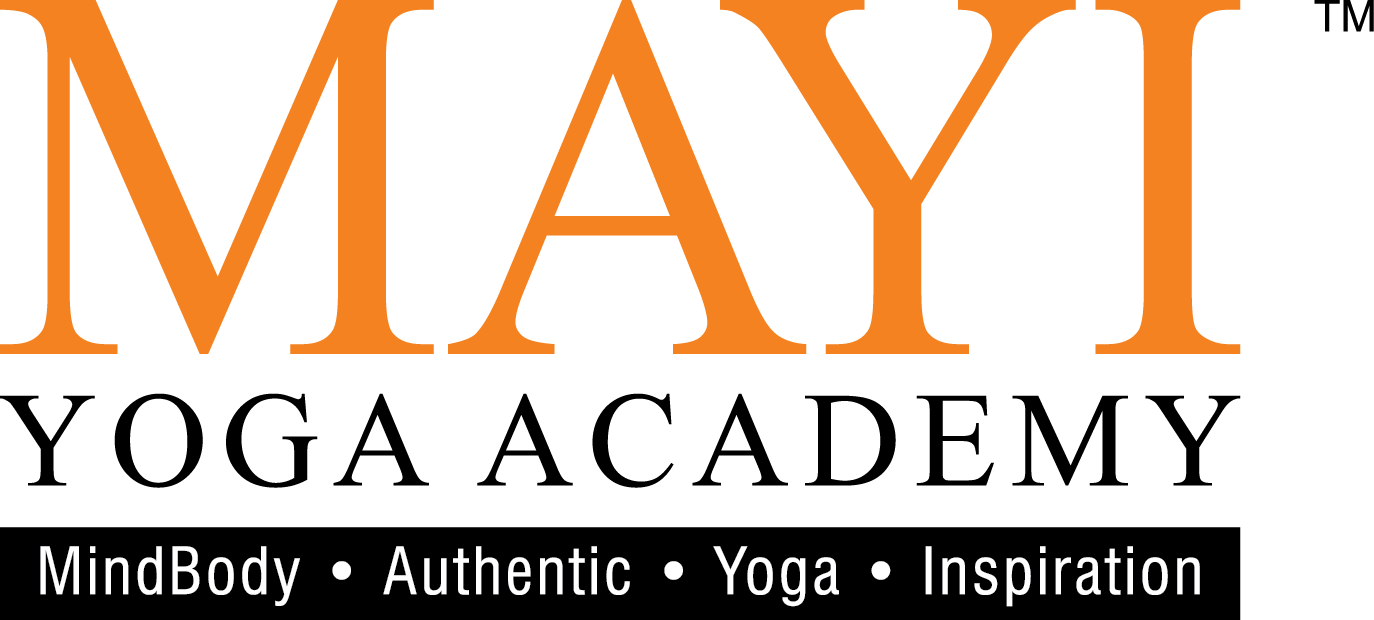Stress – a relative feeling of “drowning”
Stress is probably one of the commonest vocabularies found in our dictionary. We encounter it day in and day out, and some of us may have even given away tips on handling it to our peers, family and students. Nevertheless, have we ever wondered what exactly stress is. Stress is defined as the state of mental or emotional strain resulting from demanding circumstances. It occurs when one is put into a situation where he or she feels overwhelmed and is unable to live up to the demand – a relative feeling of ‘drowning’.
Physical body can be changed by emotions
Physically, it is coupled with the release of ‘stress’ hormones such as cortisol, adrenaline and noradrenalin leading to a sympathetic system overdrive. Unfortunately, we respond to overwhelming situations with unpleasant emotions such as fear, anger, disgust, or sadness which often do not get the chance to complete its natural response cycle. These emotions are often suppressed and pent up within the body and are predominantly stored in large sheets of the muscles. Have we ever wondered where these emotions are stored. Western-trained doctors and neuroscientists often report that the amygdala or limbic system in the brain stores human emotions and memory. However, the body holds onto the past, too.
According to the late neuro-pharmacologist, Candace Pert, the “body is our subconscious mind.
Our physical body can be changed by the emotions we experience.” Her research reveals the integrated physiology behind emotion-body connection:
“A feeling sparked in our mind-or body translates as a peptide being released somewhere. Organs, tissues, skin, muscles and endocrine glands all have peptide receptors on them and can access and store emotional information. This means the emotional memory is stored in many places in the body, not just or even primarily, in the brain. You can access emotional memory anywhere in the peptide/receptor network, in any number of ways. The real true emotions that need to be expressed are in the body, trying to move up and be expressed and thereby integrated, made whole, and healed.”
Modern scientific research is still trying to figure out the impact of emotions on the body. One interesting 2013 study tried to portray how we experience emotions in the body. Participants were instructed to colour where they actively experienced the emotion in their body. Both European and Asian participants created similar bodily sensation maps for basic and complex emotions, ranging from love to shame.
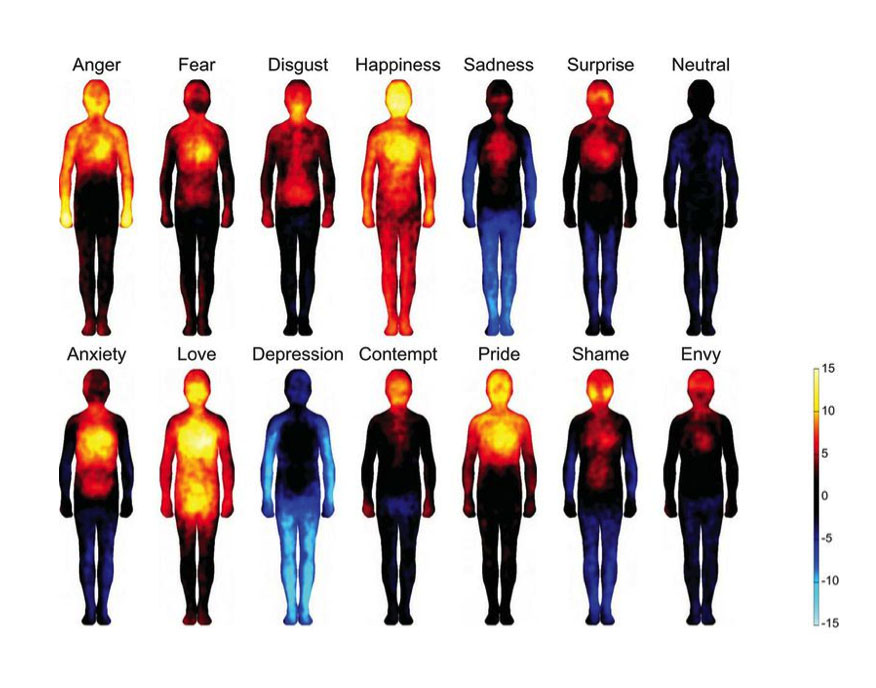
The research confirms that bodily experience of emotion is nearly instantaneous within the first few seconds of experiencing a negative emotion. People automatically tense the muscles in their jaws and around the eyes and mouth. Neurophysiologists explain that with repeated stress, people over time have shorter neck and shoulder muscles, tightened and shortened psoas muscles, irritated gluteus, tightened anus muscles, tighter eyebrows and high tension muscles in cervical regions.
Muscle tension can lead to chronic pain, knots, and spasms. One theory is that muscle tension decreases blood flow, leading to lower oxygen delivery, lactic acid build-up, and the accumulation of toxic metabolites. Shortening of the muscle fibres can also activate pain receptors. Lack of movement can further reduce blood flow and oxygenation.
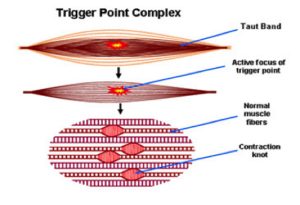
Hence, what does this mean?
Classically this phenomenon is described as lack of pranic flow to the affected parts of the body according to the Yogic Philosophy – the very reason for isolated and accelerated aging and degeneration at a specific part of the body. Common problems such as neck pain, lower back pain, slipped disc, degenerated disc disease, cervical spondylosis, sciatica and many other chronic musculoskeletal diseases mushroom out easily as a sequel. If left un-intervened, this stressful emotional cascade can affect other parts of the body as well.
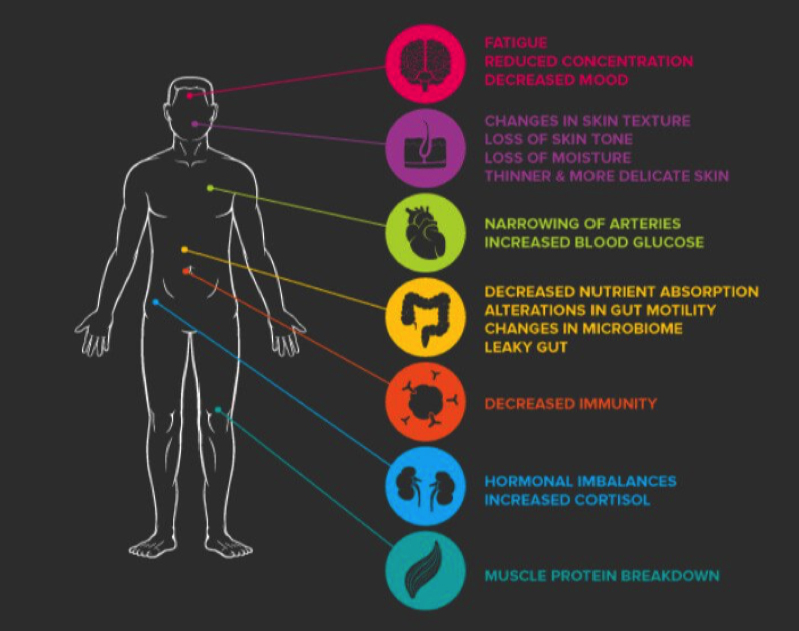
How can yoga help with stress management?
Many yoga poses can help us release stress, anxiety, and fear stored within the muscles and will certainly improve our overall health and well-being. Some poses to stretch the key areas which store emotions are given below:
1. Forehead and eyebrows
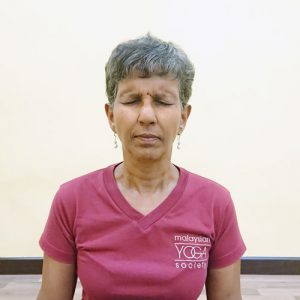
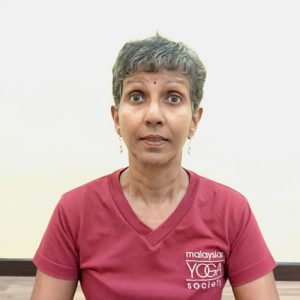
2. Jaw
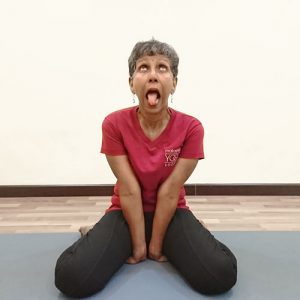
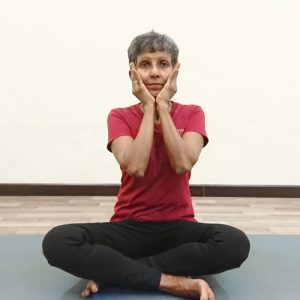
3. Neck
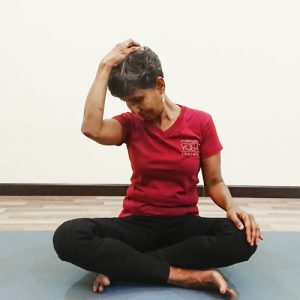
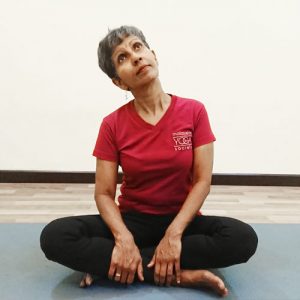
4. Shoulder blade
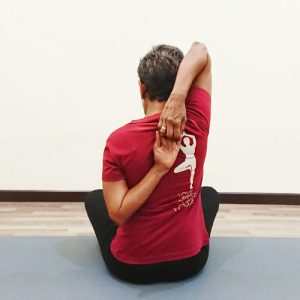
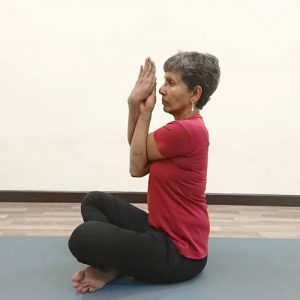
5. Hips and Psoas muscle
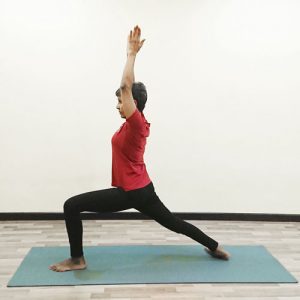
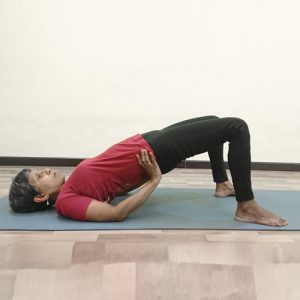
Other lifestyle changes include:
- Third eye oil pouring
- Head, neck and shoulder massage
- Satvic diet
- Regular detoxification with Kunjal and Laghoo / Shankaprakshalana
- Foot massage
- Yoga nidra
- Pranayama practices
